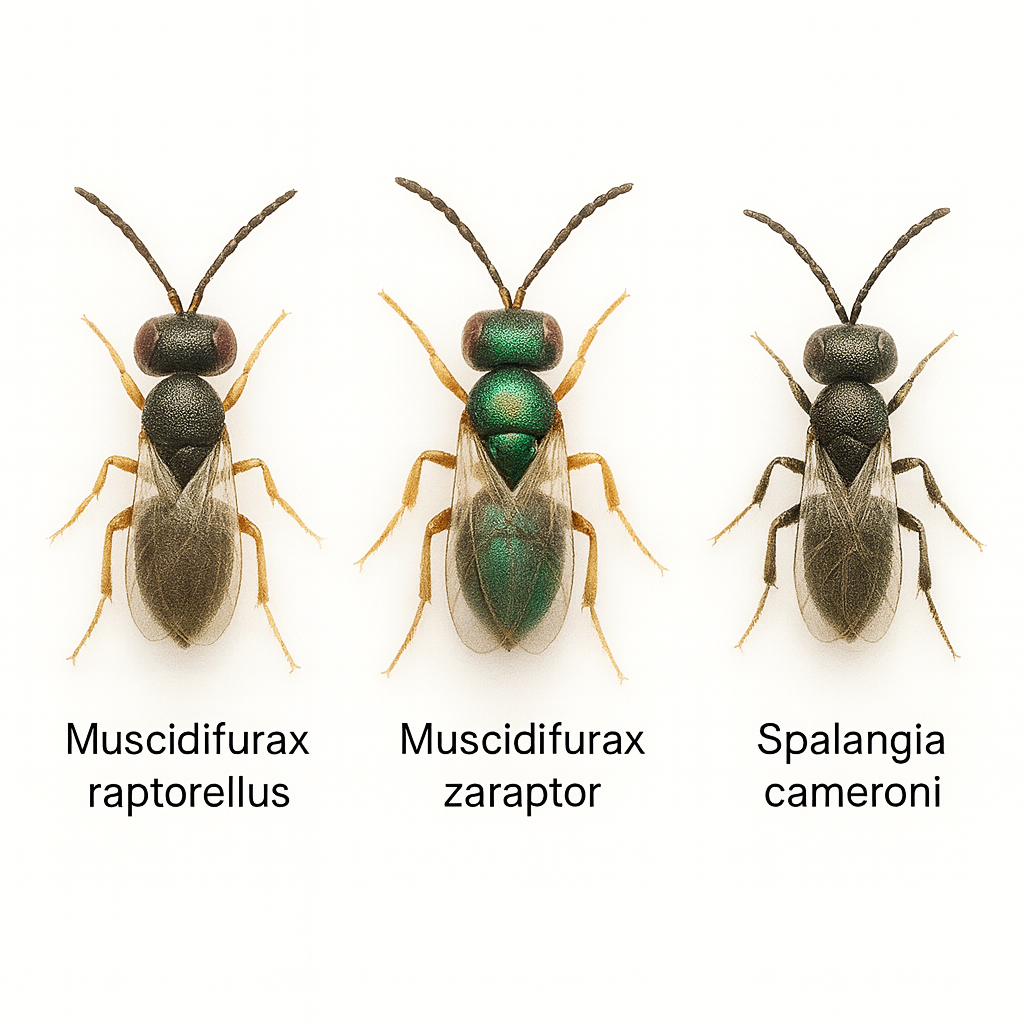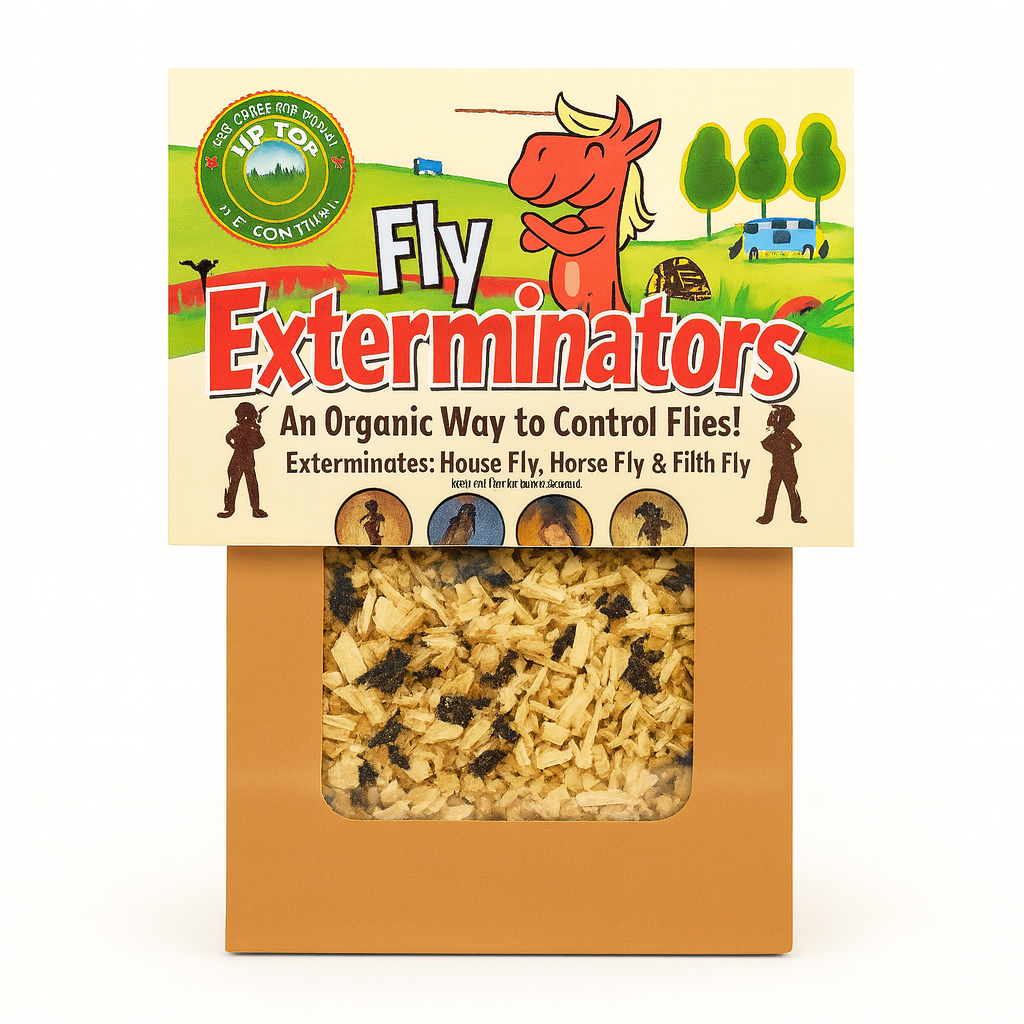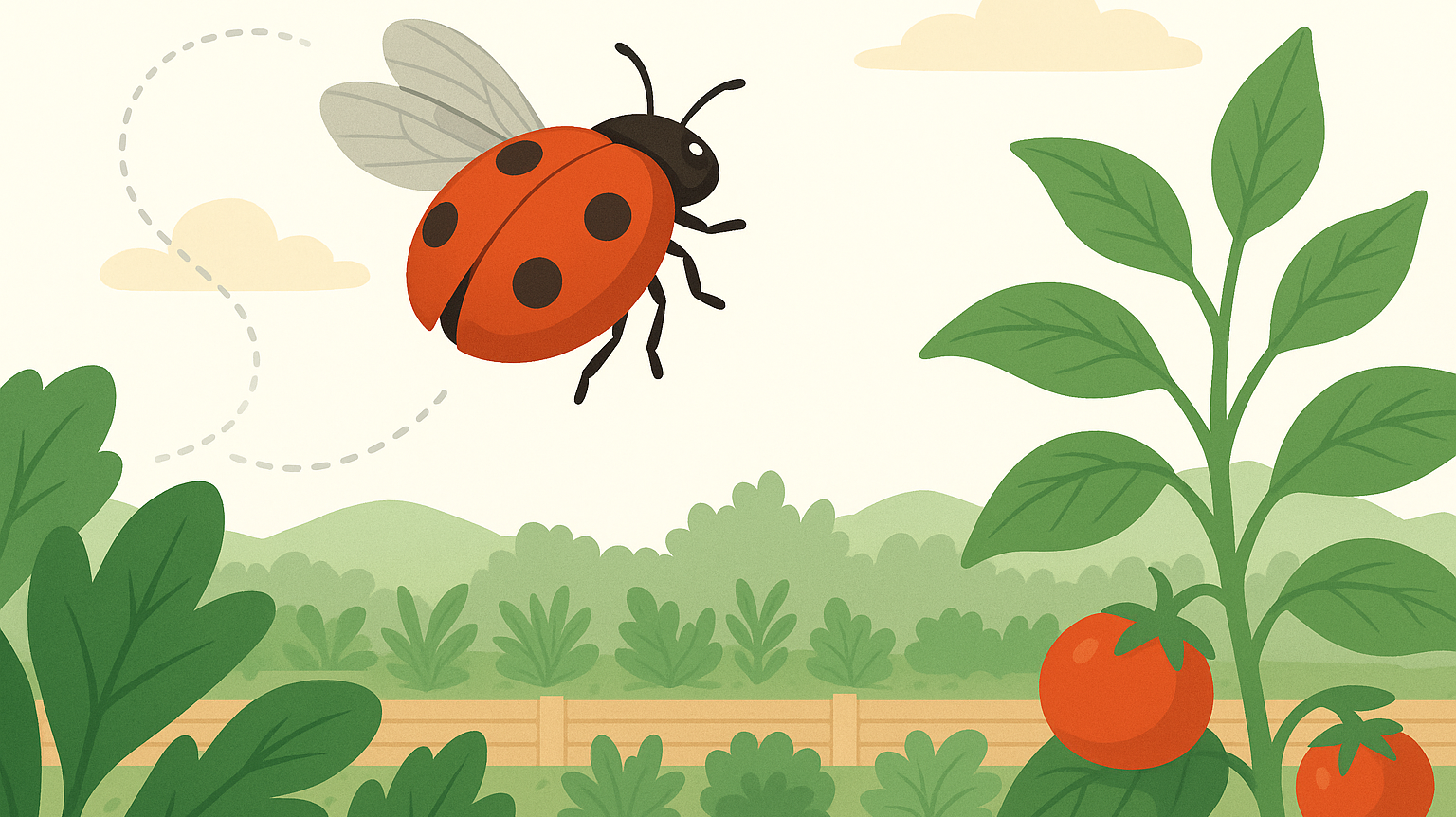How Do You Get Rid of Flies? Start Where They Start.
Sprays don’t stop breeding. Traps only catch adults.
If you want real control, you have to break the cycle—before flies even take off.
Fly Exterminators are tiny parasitic wasps that hunt and kill fly pupae in manure, compost, and other fly-friendly breeding zones. They don’t bite. They don’t buzz. And they don’t bother people, pets, or animals. They just get to work—and keep working, quietly, while your fly problem disappears.
Fly Exterminators (Parasitic Wasps)
Natural, Long-Term Fly Control Without Sprays or Traps
Each bottle contains a living mix of three species:
-
Muscidifurax raptorellus
-
Muscidifurax zaraptor
-
Spalangia cameroni
Together, they seek out and destroy fly pupae underground and in organic material—before flies can emerge.
What They Treat
| Fly Type | Coverage |
|---|---|
| House flies | Strong control |
| Stable flies | Strong control |
| Horse flies | Strong control |
| Manure-breeding flies | Effective suppression |
| False stable, horn, face, flesh flies | Partial control—wider-ranging breeders |
These wasps specialize in manure, compost, and damp organic matter—not water or dry feed.
Why Use Fly Exterminators?
| Benefit | Why It Works |
|---|---|
| Breaks the cycle | Targets flies before they hatch |
| Non-toxic | Safe for humans, animals, pollinators, and plants |
| No reapplication stress | Works for weeks after each release |
| Invisible workhorse | You won’t see them—but you’ll see fewer flies |
| Zero resistance risk | No chemicals = no resistance over time |
If you’re asking “how do I get rid of flies without spraying?”, this is your answer.
Ideal For:
-
Barns, stables, and chicken coops
-
Compost piles and manure management zones
-
Septic fields, trash areas, and organic waste piles
-
Kennels, dog runs, aviaries, and animal enclosures
Anywhere flies breed is where Fly Exterminators go to work.
How to Use
-
Start early – Apply when weather warms up—before flies explode
-
Apply monthly – Release every 3–4 weeks during fly season
-
Focus on breeding zones – Compost, manure, wet bedding—not in water, but near it
-
Protect from birds and rodents – Release in low-disturbance areas
Release & Storage Instructions
-
Store in a cool, dry place upon arrival
-
Release within 24 hours for best results
-
If needed, store at 45–55°F for up to 3 days
-
Avoid placing where beneficials can be eaten or washed out
Pro Tips
-
Sanitation is key – Less mess = fewer flies
-
No pesticides – Insecticides kill your Fly Exterminators
-
Reapply monthly – Especially after heatwaves, manure dumps, or weather shifts
-
Track trouble zones – Adjust release locations as needed over time
Results You Can Expect
-
Fewer adult flies within 2–3 weeks
-
Sustained reduction with monthly releases
-
Less dependence on traps and chemicals
-
Quiet, continuous pressure on breeding populations
-
Happier animals, cleaner spaces, better air
FAQ
How does the Live Guarantee work?
We know how important it is for your mites to arrive healthy and ready to work. That’s why we offer a live arrival guarantee—with flexible options depending on when we hear from you:
- Let us know within 24 hours of delivery: We’ll gladly send a free replacement shipment.
- Let us know within 2–3 days of delivery: We can offer store credit to make things right.
- After 3 days from delivery: Because these are living organisms, we’re not able to offer replacements or credit beyond that window. By then, it’s harder to know what went wrong or whether shipping conditions were a factor.
We truly want your mites to succeed—so please open your package as soon as it arrives and check on them. If something doesn’t look right, don’t wait—reach out and we’ll take care of you.
Where are you located?
We have a number of different locations in NJ, Maine and Oregon. While we'd love to have you, we are not currently open to the public.
Can I call you?
We get it. Sometimes it's easier to talk to someone, and on a case by case basis we can try to figure it out. Unfortunately though, we're really not able to take calls—FGMN is a small nursery, and we're usually elbows-deep in plants or packing boxes. To make sure nothing gets missed (and everyone gets a timely reply), we keep all communication in writing.
Feel free to message us at info@fgmnnursery.com. We mostly respond quickly, but every once in awhile replies may take a day. Do follow-up if you don't hear in that time. We're human, we miss an email here or there.
Too Many Options?
We get it. Try our mite/insect matchmaking quiz and instantly get matched to the solutions you may need.
Our Live Delivery Guarantee
We stand behind every leaf and every mite. If your plant or predatory insects don’t arrive alive on the first delivery attempt, we’ll make it right.
Here’s what you need to know:
- Email us at info@fgmnnursery.com within 24 hours of delivery
- Include clear photos of the item and the shipping label
- Someone must be available to receive the package—plants and bugs don’t do well sitting in the sun, a mailbox, or the back of a delivery truck
For plants, we offer store credit if something goes wrong.
For predatory mites and beneficial insects, you’ll have the choice of a replacement shipment or store credit.
If you contact us after the 24-hour window, we may still be able to help—just know it’s handled case by case.
We pack with care, insulate when needed, and check the weather before shipping. But once it’s in transit, the fastest way to protect your order is to open it right away.
Mite Matters
The Hidden Weather That Shapes Plant and Predator Life
Invisible weather shapes every growing space. Warm air pools under lights, cool air settles near the floor, and in between, tiny predators decide where they’ll thrive. Learn how microclimates influence the balance between plants, pests, and the mites that keep them in check.
If Ladybugs Are Just Going to Fly Away, Why Use Them?
Most ladybugs don’t fly off out of spite — they leave when the environment isn’t right. Learn how temperature, humidity, and shelter affect whether they settle or scatter, and how to create the ideal setup that keeps them working where you need them most.
Where Did My Predatory Mites Go?
Released predatory mites but can’t see them anymore? Don’t panic. Their invisibility is exactly what makes them effective. Learn why they vanish, how they hunt pests out of sight, and why reapplying keeps your plants protected.









